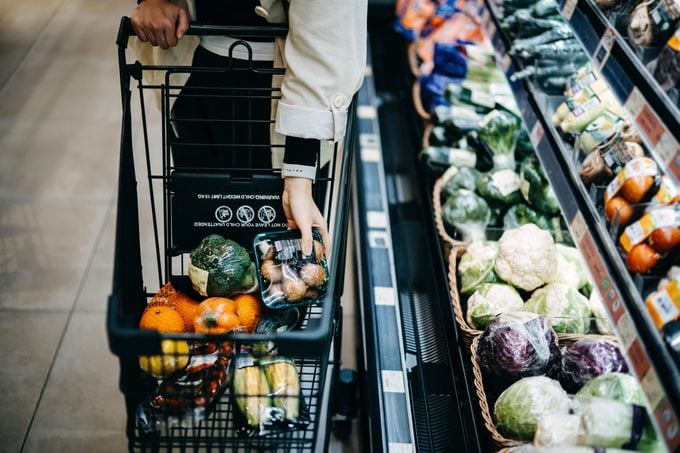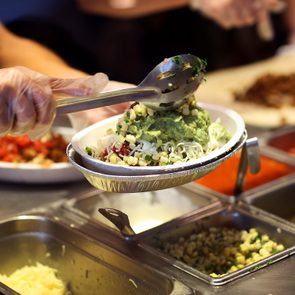12 Best Tips for Eating Plant-Based on a Budget
Updated: May 12, 2021
Help your health and your wallet by eating a plant-based diet on a budget. From freezing produce to buying on-sale foods, here are some of our expert tips.
Our editors and experts handpick every product we feature. We may earn a commission from your purchases.
Plant-based eating can be affordable
If you’re looking to eat more plant-based foods, you don’t have to spend a lot of money.
A vegan or vegetarian diet—or one simply that has more plants added to it—can be affordable and in many cases can cost less than following a traditional diet. So yes, you can still eat plant-based on a budget.
“When people think of plant-based eating, they think they need specialized products,” says Bridget Wood, RD in Reno, Nevada.
“But you can get the job done with things like beans, legumes, nuts, tofu, edamame, vegetables, fruit, and whole grains. These items are often more affordable than the packaged convenience plant-based foods and can be more nutritious as well.”
Think of it like this: You’re going to want a protein with dinner. Well, at FreshDirect, you can get 14 ounces of tofu for $3.49—or you can get turkey breast for $7.99 a pound or steak for a minimum of $12.99 a pound. The plant-based option costs significantly less.
Plant-based eating is healthy
Before we jump into how to save money, let’s talk about what plant-based eating means.
Versus a vegan or vegetarian diet, a plant-based diet may include some meat and animal products, as well as poultry and seafood. So you can be a vegan eater and follow a plant-based diet—or you can be a flexitarian on a plant-based diet. (A flexitarian diet leans towards plants without completely cutting out meat.)
Eating a plant-based diet means eating more plants, including plant-based protein.
“Because a well-planned plant-based diet will include an overall abundant intake of powerful, health-protective vitamins, minerals, and plant nutrients, it offers many health perks,” says Beth Stark, RDN in Harrisburg, Pennsylvania.
“This includes a lower risk for chronic diseases like heart disease, diabetes, and certain cancers. A plant-based diet also promotes a healthier gut, thanks to a higher fiber intake.”
Of course, to get those health benefits, you need to eat balanced meals. Think of a protein (for instance, tofu, beans, nuts, or seeds), a healthy fat (such as avocado, olives, or olive oil), a whole grain (like brown rice, quinoa, or oats), and a vegetable or fruit at every meal.
“A plant-based diet isn’t a healthier option and won’t deliver positive health benefits when it’s lacking in nutrient-dense foods,” adds Stark.
(Still confused? Learn more about the difference between plant-based vs. vegan.)
How to eat plant-based on a budget
Now that we’ve gone over the why’s of following a plant-based diet, let’s talk about how you can lower your grocery bill.
Plan around what will spoil first
“Before shopping, always create your upcoming week’s meal plan to focus on fresh ingredients that are verging on the end of their shelf life and need to be used up,” says Stark.
“This step prevents you from buying duplicate ingredients that might go to waste, ultimately causing you to throw dollars right in the trash.”
Batch cook whole grains
“Prepare a big batch of your favorite whole grain, like super budget-friendly brown rice, at the beginning of the week to incorporate into quick meals like grain bowls, salads, casseroles, tacos, or stir-fries when you’re especially time-pressed,” says Stark.
“Rice is one of the most affordable plant-based grains that can be nicely enjoyed as a meal’s key ingredient or a complementary side dish. It’s also great for stretching portions while adding a nutrition boost.”
Plan several meals with the same protein
“If you have two to three meals or snacks that will use pinto beans, it’s easy to cook a batch on the weekend and use these throughout the week to create several different meals,” says Kelsey Lorencz, RD, a plant-based registered dietitian in Saginaw, Michigan.
“By bulk cooking one ingredient, you could make a beans-and-greens quesadilla, add the beans to a tofu and veggies scramble, and mash some up as a sandwich spread. Through meal planning and prepping, you can make delicious and seriously cheap plant-based meals at home.”
(Here are some high-protein plant-based meals to try.)
Freeze leftover produce
Have extra cauliflower from salad prep or extra bananas that went brown too fast? Freeze them in freezer-safe zip-top bags. You can use them to make a cauliflower smoothie for a plant-based breakfast or chocolate banana nice cream for a plant-based dessert.
Use the whole plant
“Maximize your money and minimize food waste by finding creative ways to use every last bit of your produce!” says Arielle “Dani” Lebovitz, RDN and owner of Kid Food Explorers. “For example, use the whole broccoli from florets to stalk.” You can roast the florets and make soup, saute the stalks, or shred the stalks into a broccoli slaw salad.
Start gardening
“Plant a garden,” says Toby Smithson, RDN. “Start with a hydroponic garden indoors to get a quick start to growing your vegetables and herbs.” If you grow a few staple herbs—think basil, oregano, and cilantro—you can clip as you need and avoid adding these to your grocery bill.
(Use your harvest to make these healthy plant-based snacks.)
Make your own
“Avoid using a lot of plant-based convenience foods such as mock meats and cheeses, as the price can be pretty hefty on these pre-packaged foods,” says Lorencz. Try your hand at making your own black bean burgers.
(Here are some tasty vegan burgers everyone will love.)
Buy frozen and canned produce
“Fresh produce isn’t a requirement for nutritious foods,” says Wood. “You can get nutrients and vitamins from canned and frozen produce for a fraction of the price and effort! Frozen fruit and vegetables have the same nutritional benefits as fresh without the time limit and prep time.”
And yup, at FreshDirect, a 14-ounce can of diced tomatoes is $1.49, whereas fresh tomatoes are $2.49 a pound.

Shop around
Need saffron or tofu? “Shop at ethnic markets to find better pricing—for example, Indian grocery stores for spices and Asian markets for tofu,” says Vandana Sheth, RDN, author of My Indian Table.
Buy on-sale foods
“One of the best bargains in the supermarket is to buy foods that are marked down in price,” says Joan Salge Blake, RDN, a nutrition professor at Boston University and host of the nutrition and health podcast Spot On! “This will help make your food budget go farther and help save the planet.”
“Here’s the real deal on foods on sale,” she says.
“The supermarket must adhere to the ‘sell by’ date on the food product. To eliminate food waste—which is a good thing as we don’t want healthy, edible foods being tossed and ending up in a landfill—they will mark the food down before the ‘sell by’ date in hopes that you will buy it so they don’t have to toss it. Buy these healthy foods at bargain prices and either use them immediately or put them in your freezer for use later.”
(If you’re unsure, these are the food expiration dates you should stick to.)
Cook with canned beans
Nope, you don’t have to pair pasta with expensive sides of protein!
“Puree cannellini beans to add protein to mac and cheese,” says Leslie Bonci, RDN. Or add white beans or chickpeas to a bowl of pasta, along with olive oil and veggies. Canned beans often cost less than a dollar and offer more than one serving.
Make your own spice blends
Spice blends can be pricey—and they often go bad before you finish using them. Make your own and use up ingredients like crushed red pepper and dried basil, for instance, when blending your own pizza seasoning.
Need some more plant-based recipe ideas? Here are some to try:



















